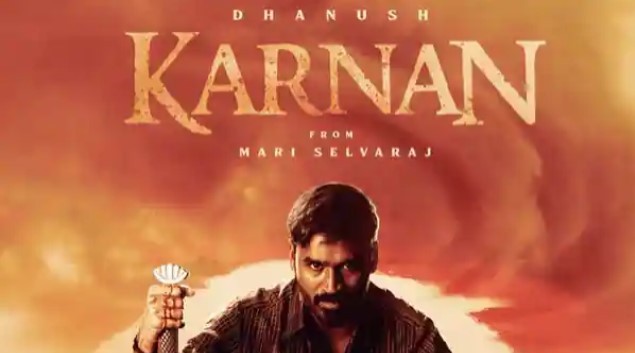
Karnan – Movie Review
Author – Bhagyashri Boywad
The recently released movie, Karnan is directed by Mari Selvaraj and the lead role is played by actor Dhanush. The movie starts with a girl laying down on the street, having fits, and buses passing by on both sides of the road. This scene is very powerful as it depicts how Dalit Bahujan people suffer from pain and nobody pays any attention, neither they come forward to help nor they show any humanity towards them. The girl doesn’t get any help and dies and becomes the Kaattu Pechi goddess.
This movie talks about various things, how marginalized Bahujan people live in rural areas, what they have to go through, it talks about nature, animals and their day to day relation with it, and also the love-hate relationship of people. This story is about a small village named Podiyankulam where the Dalit Bahujan live. The villagers do not have a bus stop for their village and have to depend on neighbouring village Melur for the bus stop. Melur village belongs to the upper caste people who dominate them. The clash between the villagers of Melur and Podiyankulam is well known in that area to the police and landlords. Melur people have made the people of Podiyankulam dependent upon them. They know they have power in their hands and one of the ways this power manifests is by making them dependent on the bus stop in their village. State and bureaucrats are involved too, despite knowing the fact Melur and Podiyankulam village have clashed, they do nothing to create a bus stop for the people of Podiyankulam. This shows whose demands are fulfilled in the State/Nation.
The story does not revolve only around the Hero but every character plays an equally important role and does justice to it. The movie also shows how power and politics are related to one another. The Pradhan (head) of the village, other elders and younger men and women play a very important role. When Karnan cuts the fish with the sword, they celebrate that in the middle of the road. He then sits on the elephant and dances. Because of the gathering, a bus on the road can’t move. The police van arrives and one policeman asks them to unblock the road. He also taunts them by saying “you guys can’t ride a vehicle but you can sit on an elephant and dance”. He can’t tolerate the celebration by the Bahujan people. He thinks that these people should be looked down upon as they belong to the lower caste but look what they are doing is dancing!
Women in the movie are shown in a brilliant way whether it is Karnan’s sister, mother, lover or other elderly women. Dalit Bahujan women contribute equally contribute to the labour in the rural area. They are not totally dependent upon their family or the male. They are breadwinners too. When the young girl from Podiyankulam goes to Melur bus stop with her father to attend her first day of college, men create a ruckus, they question her being in the public space. It shows how Bahujan women are seen as sexual objects by dominant caste men and how they can harass them in public transport because they think they own this public property just because they are born into that village and belong to the upper caste. The movie also shows how having educational rights for Bahujan women is something not accepted by the upper castes and that’s why they make sure to stop them from accessing public spaces either by sexually objectifying or harassing them. The idea is to bring shame to the Bahujan woman’s family and her entire community so that they do not encourage sending their daughters to schools and colleges. Bahujan women have had a long history where they have been part of movements. In the movie women pelting stones is not just a scene but their real-life story and their contribution to the Self Assertion Movement.
People often say what’s in a name? But in this movie, people are beaten up for having Hindu names like Duryodhana. The Pradhan of the village is beaten up for wearing a turban. The villagers of Podiyankulam are not scared of the police and are more respectful towards their Pradhan. One of the police members gets very angry because when he enters no one offers him a chair to sit in. When he asks for the chair, a person goes inside to get it but forgets about the chair and instead helps an elderly woman who is bedridden to go to the washroom. This enrages the policeman and he beats them up for their unity, their courage, their strength and most importantly for their assertion of equal rights. After this, older men went to the police station but they were made to stand there, and at the end of the day they were beaten up for having Hindu names, giving much importance to their pradhan. Standing up against police. When villagers did not turn to their homes, Karnan and others went to the police station. A fight takes place in the police station and the portrait of Dr. B.R. Ambedkar is shown. This gives goosebumps to the audience and reminds them of his words –
“Ours is a battle not for wealth; nor for power, ours battle for freedom; for reclamation of human personality.”



great! Such movies should be produced regularly!